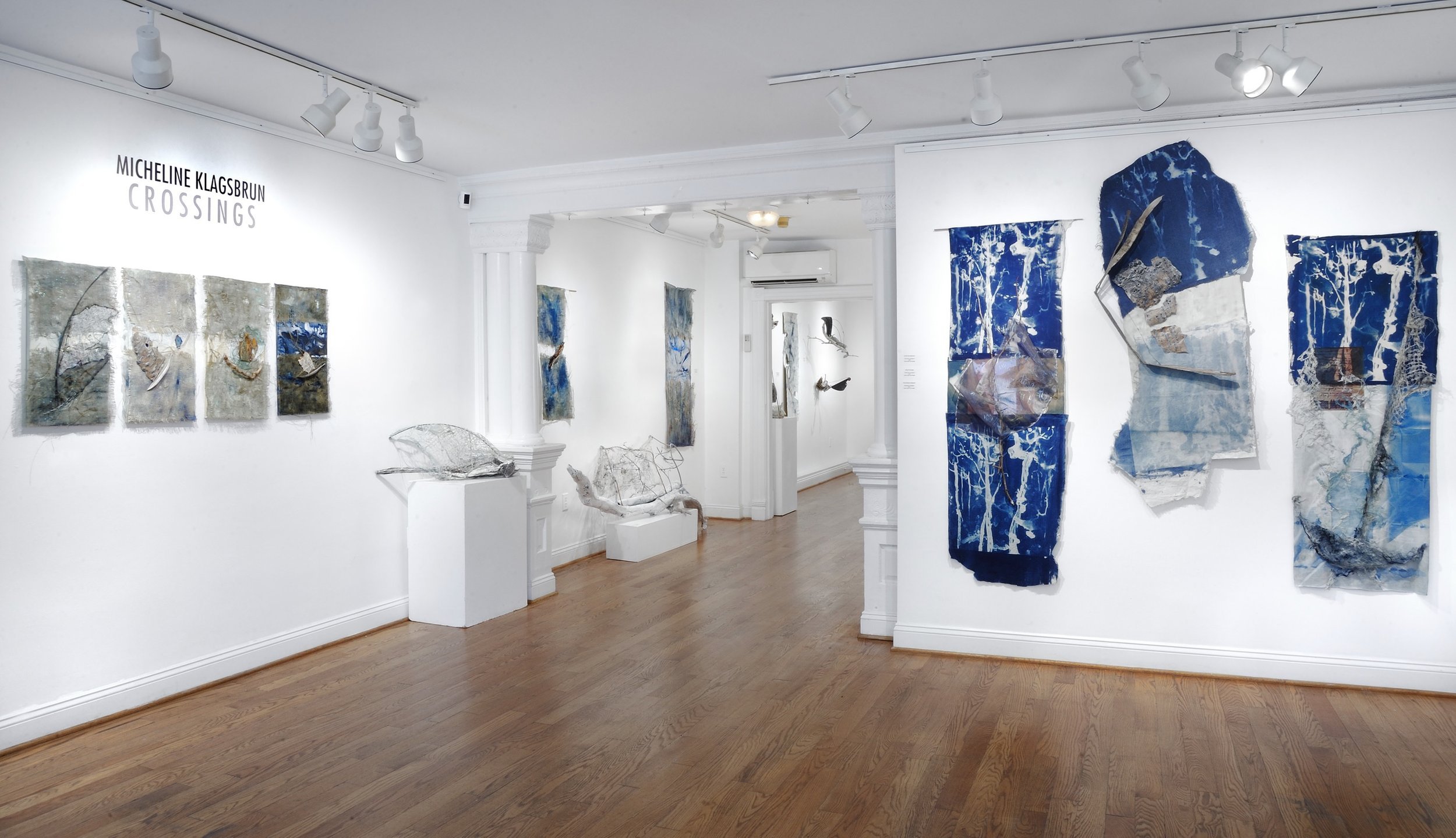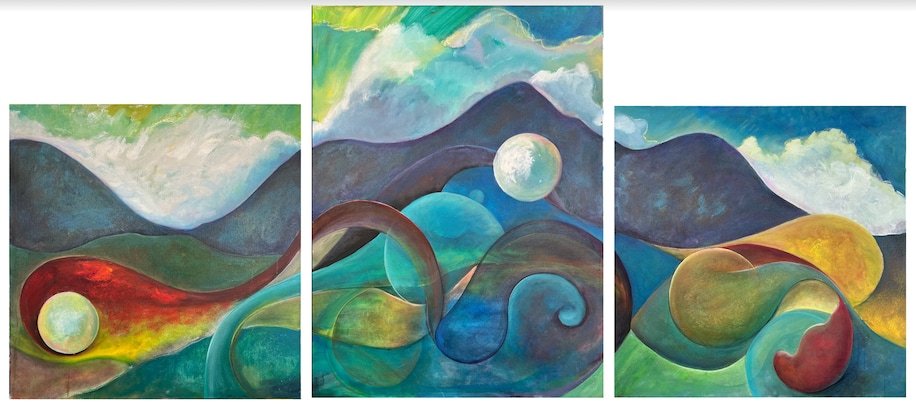“History is one of the themes of Micheline Klagsbrun’s “Crossings” at Studio Gallery, so it’s fitting that the artist employs found objects whose weathered surfaces testify to past uses and experiences. Lengths of deteriorated driftwood serve as hulls while sections of tattered netting evoke sails in the D.C. artist’s recent pieces, which expand on the work in her smaller previous exhibition, “Night Boats.” That show was inspired by a ship’s log of the 1941 voyage that Klagsbrun’s Holocaust-escaping father took from Portugal to Britain. This one extends the metaphor to encompass various journeys, psychic as well as physical, and including the passage into death.
“Crossings” by Micheline Klagsbrun
Many of the sculptures hang, often in midair, as if to simulate the precariousness of a ship at sea. Some of the banner pieces are ghostly white-on-cobalt cyanotypes or include backdrops made with the process, best known for its use in architectural blueprints. Most of the free-standing, ship-like assemblages are small, but “Night Boat of the Golden Moon,” whose twisting wooden base is painted white, stretches more than eight feet. The found objects are “seemingly fragile yet in fact resilient,” notes the artist’s statement.
Among Klagsbrun’s notable influences is Ovid’s “Metamorphoses,” whose tales of transformation — often of women altered by imperious gods — suit the artist’s interest in protean forms. This show features a few works titled after lines from Victorian-age British poet Gerard Manley Hopkins, such as “Laced With Fire,” whose jagged voids were singed by actual flame. Hopkins, whose verse didn’t attract a following until decades after his death, seems an apt reference for “Crossings.” The poet was a self-styled traditionalist who came to be seen as a modernist, illustrating how life journeys can lead to entirely unexpected destinations.
Water imagery abounds in Elizabeth Curren’s “Impact,” also at Studio, but human destiny is seen differently by the artist’s handsome prints, paintings and handmade books. Her subject is climate change, represented by dwindling glaciers and advancing fires. Mankind’s presence is suggested only occasionally, notably by a few tiny, simple houses dwarfed by smoke and flame in “Armageddon Approaching,” a painting-collage. The pictorial forms are stark and flat, although enhanced by dappled colors, in most of Curren’s works. But there’s literal depth to two “tunnel books” that develop sequences through multiple cutout pages. “Paradise Fire” and “Through Blue Ice” draw the eye into layered accounts of burning and melting.”
Carolee Jakes's triptych “Just Another Cloudy Day in May.” (Studio Gallery)
“Studio’s third set of oceanic views is Carolee Jakes’s “Something Old, Something New,” a show of paintings, prints and one mixed-media work. Included are woodblocks of intricate, nautilus-like forms underwater and a “Tsunami” in which loosely painted waves crest behind a hard-edge globe. That picture’s contrast between surges and circles continues in “Just Another Cloudy Day in May,” a striking triptych in which the center panel is higher than the two flanking it. If Jakes’s landscapes don’t present philosophical or environmental parables, their ingenious compositions have a narrative flair.”
Review by Mark Jenkins, Washington Post, May 2022. Thank you!



